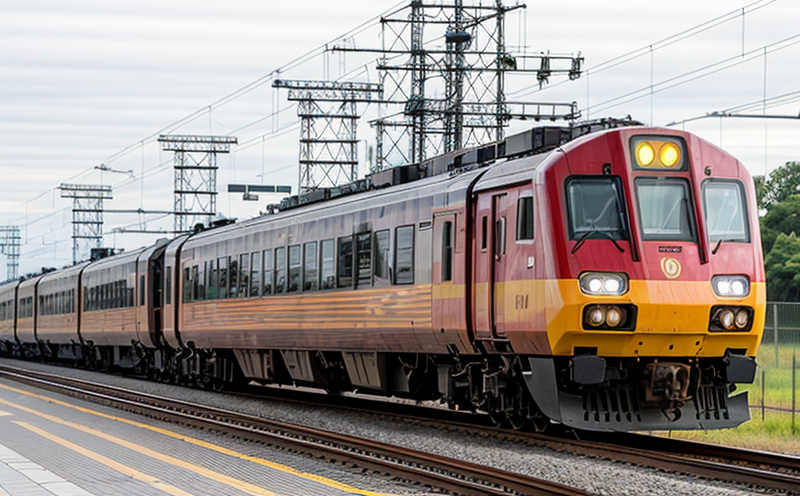IEC 62620 Performance Testing of Railway Communication Batteries
The IEC (International Electrotechnical Commission) standard IEC 62620 defines the performance testing methods for railway communication batteries used in critical infrastructure. These batteries are essential components that ensure uninterrupted communication systems within railways, which is crucial for safety and operational efficiency.
Railway communication networks rely on reliable power sources to maintain connectivity during all conditions, including emergencies. The performance of these batteries directly impacts the availability and reliability of railway communications, affecting everything from real-time data transmission to emergency response coordination.
The testing procedure outlined in IEC 62620 is designed to evaluate battery performance under various stress conditions that mimic real-world scenarios. This includes deep discharge tests, high-temperature storage tests, and rapid charge-discharge cycles. Such rigorous testing ensures that the batteries meet stringent international standards for safety, reliability, and durability.
The scope of this test extends beyond simple capacity checks to include an assessment of internal resistance, self-discharge rates, and overall battery health over time. These parameters are critical in determining a battery's suitability for railway applications where downtime can have severe consequences.
Compliance with IEC 62620 is not just about meeting regulatory requirements; it also ensures that the batteries perform reliably under extreme conditions, which is essential given the harsh environments railways operate in. The testing process involves multiple stages, each designed to simulate specific operational stressors the batteries will encounter during service.
The first stage typically involves a deep discharge followed by recharging cycles to assess the battery's ability to deliver power under heavy load conditions. This is crucial for ensuring that communication systems remain operational even when the train is stationary or in transit at low speeds.
In the second stage, high-temperature storage tests are conducted to evaluate how well the batteries retain their capacity and performance after being subjected to elevated temperatures. High temperatures can cause significant degradation of battery life and performance, making this test critical for ensuring long-term reliability.
The third stage involves rapid charge-discharge cycles designed to simulate frequent power demand spikes that occur during railway operations. This ensures the batteries can handle sudden increases in power consumption without compromising performance or safety.
Once these tests are completed, detailed reports are generated, providing comprehensive insights into the battery's capabilities and limitations. These reports serve as valuable tools for quality managers, compliance officers, R&D engineers, and procurement teams to make informed decisions about battery selection and maintenance strategies.
- Why Choose This Test?
- Ensures compliance with international standards like IEC 62620
- Guarantees reliable performance under extreme conditions
- Promotes long-term reliability and safety in railway communication systems
- Provides detailed reports for informed decision-making
Scope and Methodology
The scope of IEC 62620 performance testing includes evaluating the electrical characteristics, mechanical integrity, and operational parameters of railway communication batteries. This comprehensive approach ensures that all aspects of battery performance are thoroughly assessed.
The methodology for conducting this test involves several key steps:
- Preparation of the battery under specified conditions
- Deep discharge followed by recharging cycles to assess capacity retention
- High-temperature storage tests to evaluate thermal stability and performance degradation
- Rapid charge-discharge cycles to simulate real-world power demand spikes
The preparation stage involves ensuring that the battery is in optimal condition before testing begins. This includes checking for any visible damage, verifying the battery's specifications against required standards, and conducting initial capacity checks.
In the deep discharge/recharging cycles, the battery undergoes multiple full charge-discharge operations to simulate real-world usage patterns. This helps identify any issues with the battery's ability to deliver power under heavy load conditions, which is crucial for maintaining communication systems during railway operations.
The high-temperature storage tests are conducted by placing the batteries in controlled environments that mimic potential operational conditions. These tests assess how well the batteries maintain their performance and capacity over time when exposed to elevated temperatures.
Finally, rapid charge-discharge cycles simulate the frequent power demand spikes experienced during railway operations. This ensures that the batteries can handle sudden increases in power consumption without compromising performance or safety.
Competitive Advantage and Market Impact
The IEC 62620 performance testing service offers several advantages that can significantly impact your organization's competitive position in the market:
- Compliance with International Standards: Ensuring compliance with IEC standards positions you as a leader in quality and reliability, which is crucial for gaining trust from customers and stakeholders.
- Rigorous Testing Protocols: By following strict testing protocols, you can identify potential issues early on, allowing for timely corrective actions that enhance overall product performance.
- Data-Driven Decision Making: Detailed reports provide valuable insights into the battery's capabilities and limitations, enabling informed decision-making regarding procurement, maintenance, and future development strategies.
- Innovation and Improvement: The testing process encourages continuous improvement by highlighting areas where performance can be enhanced, driving innovation within your organization.
In summary, IEC 62620 performance testing is a vital service for railway communication batteries that contributes significantly to the reliability and safety of railway operations. By adhering to this standard, you not only meet regulatory requirements but also set yourself apart as a provider of high-quality products and services.





